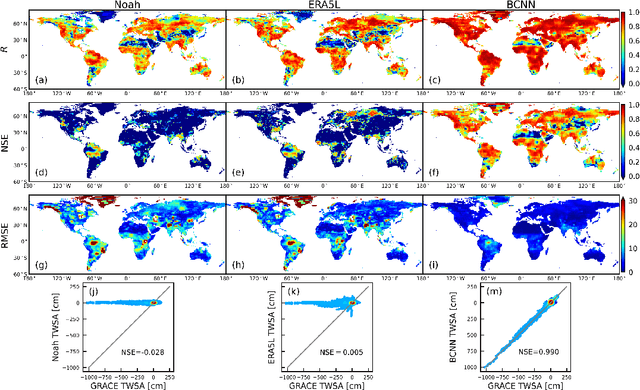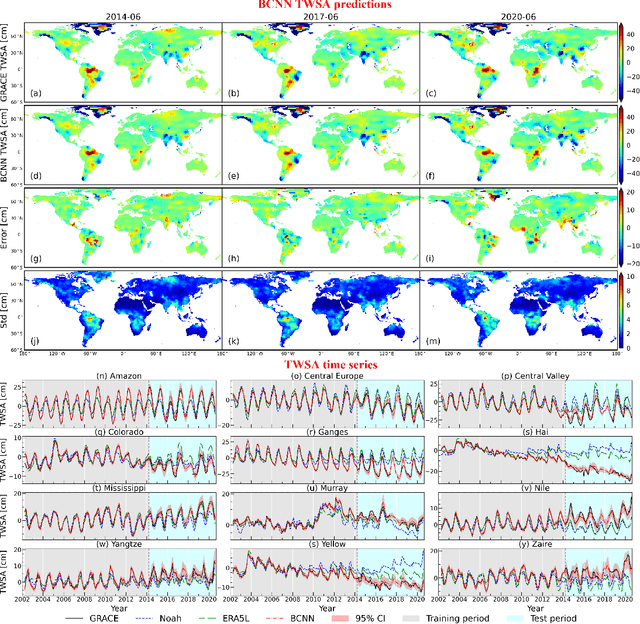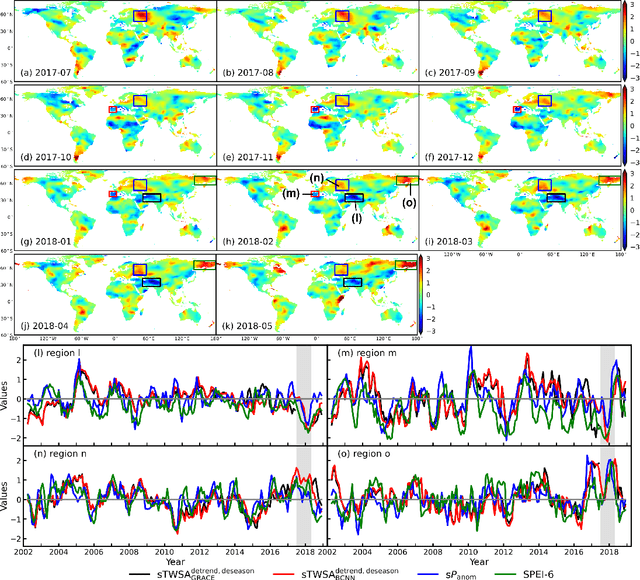Yulong Zhong
Filling the gap between GRACE- and GRACE-FO-derived terrestrial water storage anomalies with Bayesian convolutional neural networks
Jan 21, 2021


Abstract:There is an approximately one-year observation gap of terrestrial water storage anomalies (TWSAs) between the Gravity Recovery and Climate Experiment (GRACE) satellite and its successor GRACE Follow-On (GRACE-FO). This poses a challenge for water resources management, as discontinuity in the TWSA observations may introduce significant biases and uncertainties in hydrological model predictions and consequently mislead decision making. To tackle this challenge, a Bayesian convolutional neural network (BCNN) is proposed in this study to bridge this gap using climatic data as inputs. Enhanced by integrating recent advances in deep learning, BCNN can efficiently extract important features for TWSA predictions from multi-source input data. The predicted TWSAs are compared to the hydrological model outputs and three recent TWSA prediction products. Results suggest the superior performance of BCNN in bridging the gap. The extreme dry and wet events during the gap period are also successfully identified by BCNN.
 Add to Chrome
Add to Chrome Add to Firefox
Add to Firefox Add to Edge
Add to Edge